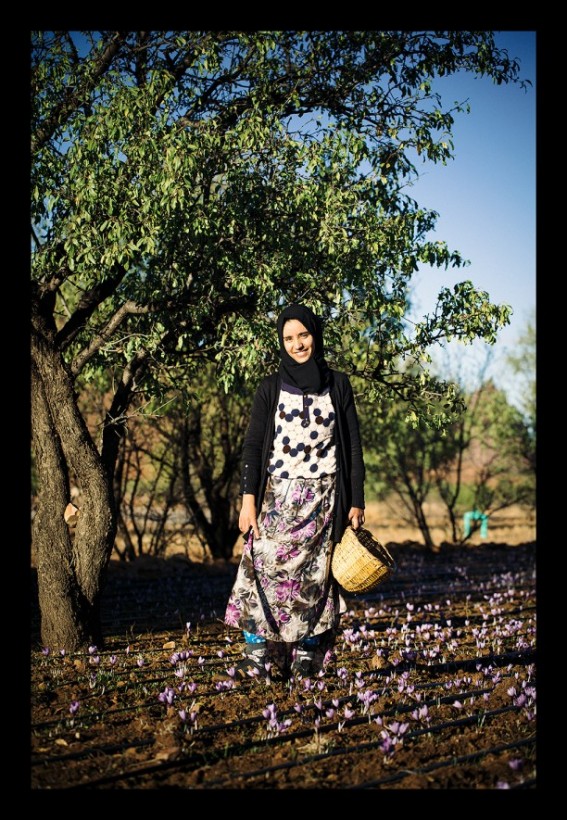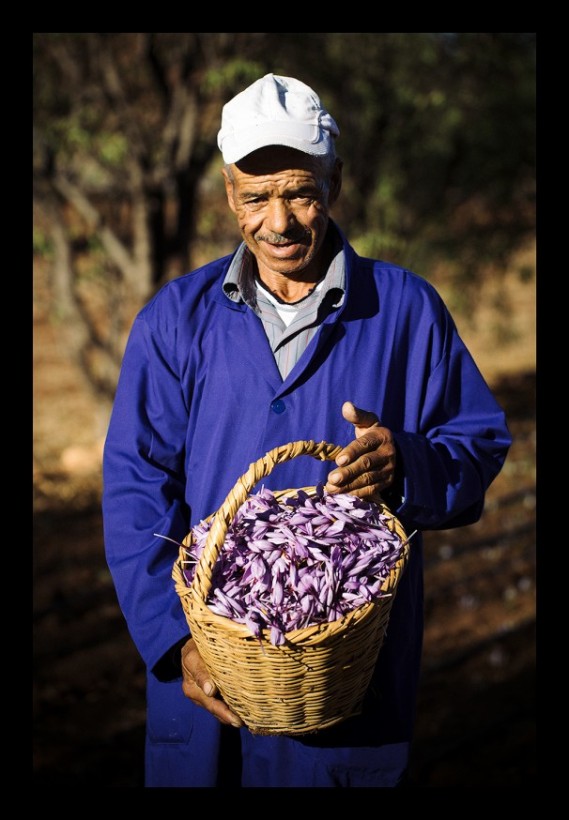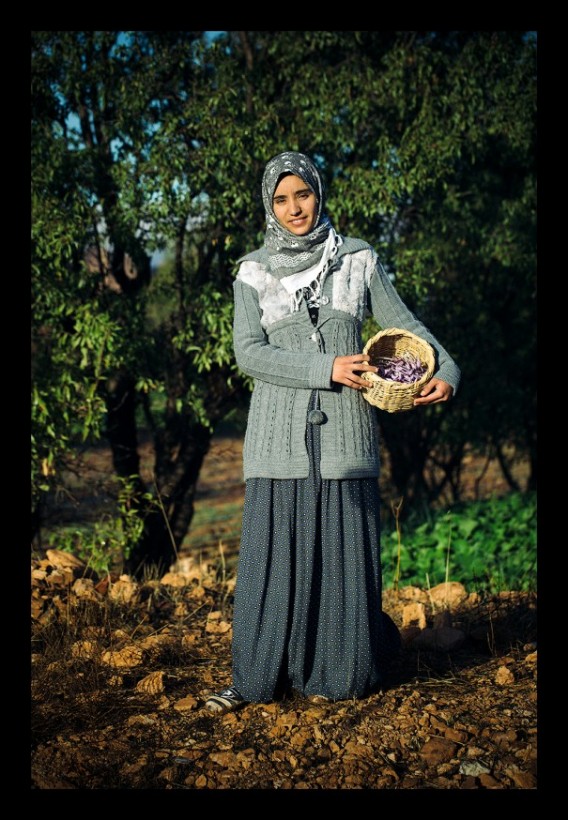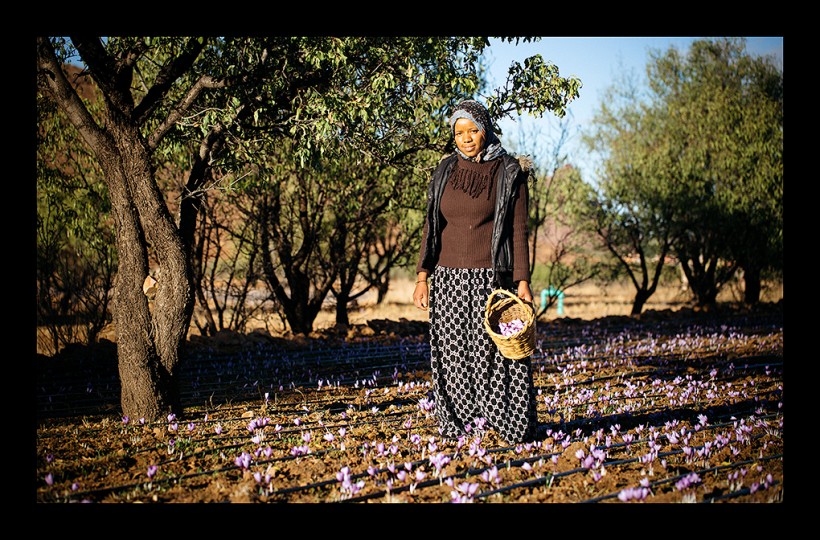
The story of saffron in Morocco is more than a story about Morocco’s saffron capital of Taliouine. It’s also about the process involved in harvesting saffron and the local farmers working to supply the world with one of its most sought-after spices.
It’s not unusual for families with a plot of land to farm their own patch of saffron; the region’s ability to grow such an expensive and sought-after ingredient provides extra income which is not taken for granted. While saffron holds an undoubted prominence in the cuisine and culture of Morocco, it is also a commodity: a batch of stored saffron is as good (or better) than any investment. Planting, growing, harvesting, and selling saffron is seen as a blessing by all.
Saffron bulbs are planted in the summer, between July and September, and the flowers are harvested around the end of October, sometimes going into November. Villages higher in altitude among the surrounding mountains are the first to see crocuses appearing. The purple fields continue cascading down to Taliouine according the climate.

The sky lights up behind Igri village mosque as the dawn breaks.

Saffron flowers are picked while they are still closed in order to protect the stigma threads inside.

A farmer gently handpicks saffron from the rough soil.

A farmer picks saffron flowers early in the morning.

A basket full of saffron crocuses in the early morning light.

Mafoud, owner of the Auberge Le Safran in Taliouine, helps with the morning crop.

Both men and women work hard to fill their baskets before the sunrise.

Another worker that helps keep the region’s saffron way of life alive.

A local woman displaying her handpicked crocuses in her basket.

Following the harvest, the baskets are emptied.
The Farmers Behind the Saffron
The farmers begin their day at around 5 a.m. and spend two to three hours picking the closed flowers before the sun has risen. This procedure helps to protect the delicate stigmas inside the saffron crocuses. Each day brings a new crop and the farmers pick around two baskets full of flowers every morning during the harvest. The labor can be difficult, especially during bad weather. The early mornings and high altitude mean the farmers are often working in relatively dark, cold and muddy conditions. During the months of October and November, a farmer can expect 15-20 days of harvesting. After the flowers have been culled, the land is weeded and the fields are readied for the winter wheat and barley planting. The farmers survive off of the saffron harvest for the remainder of the year, and the bulbs will be ready to plant again in July.





After The Harvest
After the flowers have been harvested, the farmers then have breakfast before separating the stigmas. Breakfast consists of freshly baked bread, pure honey, black olives, and fresh cheese and butter. Of course, no meal is complete without tea. One farmer showed us the quality and freshness of the saffron by placing some threads on sugar cubes. Within seconds of touching the sugar, the saffron bled golden-yellow into the cube.

Saffron stigmas are placed in between two sugar cubes in order to test their quality and freshness.

The rich color of fresh saffron infused into the sugar cube.

The saffron-infused sugar cubes are placed into the teapot.

Saffron tea accompanies breakfast.









